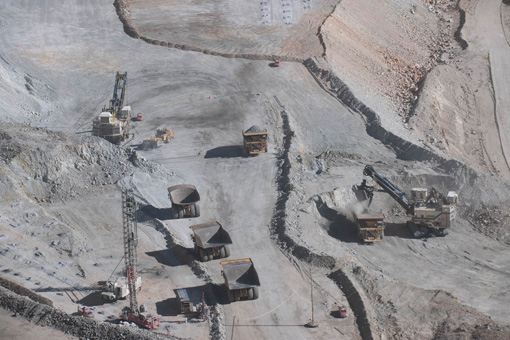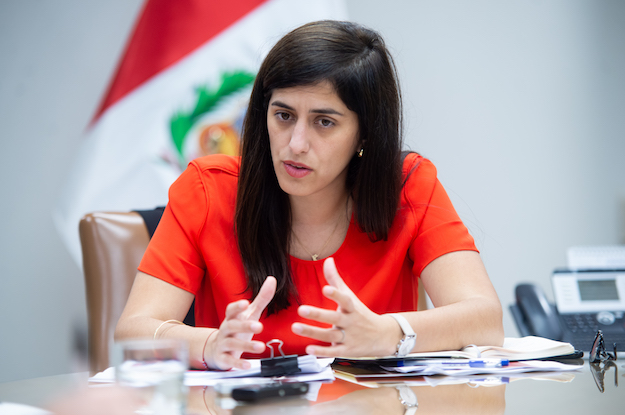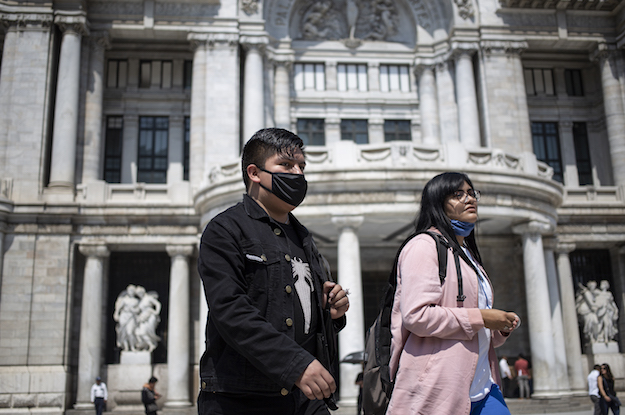The mining boom has brought huge economic benefits to some of Latin America’s least developed countries. But in big mining countries like Colombia and Bolivia the industry’s success is accompanied by an increase in protests, violence and human rights abuses. Not everyone has been able to share in the wealth created by mining—and in many mining communities, tensions are high.
Peru is a classic example of the tension between prospering resource extraction projects and the often impoverished communities living nearby. Meanwhile, countries like Argentina—although not top on the list of regional mining countries—experience their own challenges, including the violation of basic rights like freedom of speech and freedom of the press in mining-centric communities.
Protest in Peru
Peru is one of the world’s top producers of silver, copper, zinc, and lead. According to the Fraser Institute, mining provided 59 percent (or $27.4 billion) of Peru’s export revenues in 2011. In 2011, while the U.S. economy grew by 1.8 percent and Europe fell back into recession, the Peruvian economy expanded by nearly 7 percent. Between 2007 and 2011, Peru’s poverty levels dropped sharply from 42 percent to 28 percent.
But not all is positive. According to the Peruvian government’s own statistics, social conflicts have increased by 300 percent during the last five years, with 42 percent of conflicts related to social or environmental issues.
Human rights groups are alarmed at the violent crackdown on protests and the displacement of Indigenous groups in mining areas. At least 19 people have died in disputes over natural resources since President Ollanta Humala took office in 2011.
The tensions related to the environmental fallout from mining activities in communities located near extraction sites are clearly taking their toll. Violent standoffs between mining companies and anti-mining groups in areas like Cajamarca, located in the northern highlands of Peru, have put in jeopardy some of the $53 billion in investments that are expected over the next decade. These disputes have divided communities; in some cases continuous roadblocks have isolated and damaged local economies.
According to a 2012 perception study commissioned by Newmont, the Colorado-based firm that operates Peru’s Yanacocha gold mine, the conflict in Cajamarca has been brewing for years. Respondents to the study included 60 local community members, local authorities, civil society organizations, and Yanacocha personnel. One respondent recalled that, from the community’s perspective, Newmont entered the region in the 1990s as “armed foreigners.” Many respondents cited the company’s “arrogance” and lack of understanding of the local culture and community as key problems.
The study found that Newmont never established a long-term development strategy for the region and instead developed a habit of satisfying short-term needs—providing handouts and extra money for pet projects when locals near the Yanacocha mine complained.
But the results have at times backfired. According to one mining employee interviewed for the study, “It is company policy to give things to people. This has increased blockades because people see [the company] as a way to get what they want. The company has supported this dynamic with its actions.”
Mining and Press freedom in Argentina
Extractive industries in the region are also criticized for affecting a fundamental guarantor of democracy: press freedom. In northwest Argentina, local journalists say that big mining companies with links to the central government have censored small newspapers to prevent the publication of stories around environmental abuses.
Silvia Gramajo, an environmental reporter in the Catamarca mining region, tried to investigate complaints that Minera Alumbrera’s exploitation of water, copper and gold reserves was damaging local ecosystems, diminishing water basins and reducing river flows, as environmental reports suggested.
However, Gramajo’s employer put a stop to her investigation. Gramajo explains that after the 2001 Argentine debt crisis, advertising revenue from Alumbrera, the biggest company in the area, became indispensable for local papers to survive. “The intimidation exerted by the mine was incredible,” she says, referring to the mine’s discretionary allocation of advertising dollars.
“Media outlets have advertising contracts with the mines, and this makes them restrict the information that journalists can publish. They simply tell you: ‘you cannot talk about contamination in the mine,’” said Gramajo, referring to her former editors. After years of silence, Gramajo grew so frustrated at not being able to report on the mining abuses that she quit her job at the TV station Canal 5, and left journalism altogether.
A Univision freelance reporter traveled to Alumbrera to speak with the mine about censorship, but was not allowed to remain on the premises or talk to any media representative. Subsequent emails to Alumbrera have not been answered up to the publication of this article.
According to journalism union leader Jorge Lobo, a colleague of Gramajo’s who reports for the local TV station Canal 7 in the province of Tucumán, Minera Alumbrera and other operations in the region “colonized” the province entirely, including mineral reserves and pure water resources. “They took over almost everything, and journalism was one of their objectives,” the 42-year old says.
One of the clearest cases of press censorship occurred in the city of Andalgalá in February 2012 when Minera Alumbrera impeded journalists from entering the township to cover anti-mining rallies.
It is no secret that Argentine President Cristina Fernández de Kirchner has a difficult relationship with the media, especially with Grupo Clarín and independent journalists. Minera Alumbrera’s position has been strengthened by the rhetorical and financial support of the central government.
The Way Forward: Communication and transparency
When a big mining operation comes to town, the clash of cultures between company management and local communities can add fuel to underlying disputes or conflicts. The divide between local communities and mining companies has negative consequences for everyone.
Fortunately, there is a way forward. Recent studies on mining in Peru highlight some important points that can be applied across the region. Communication and transparency on both sides of the dispute are important.
A 2012 study by Harvard’s Kennedy School and the University of Queensland highlights some areas that appear to be key determinants of relations between mining companies and local communities. These include addressing company attitudes toward community relationships and conflict management, revising modes of engagement with communities, reviewing corporate structures and hierarchy as well as hiring and training practices, and assessing community impact.
To reduce conflict, companies need to see the local community and regional governments as partners, rather than enemies. Corporate culture and the behavior of management, whether positive or negative, can have a lasting impact.
The media also has an important role to play as well. Many local journalists are already reporting from community-based radio stations, where they can denounce human rights and environmental abuses without the restraints of ad revenue. They can empower communities under threat, but also help separate truth from rumor and hearsay.
In the long run, improving community relations will benefit both the people and the operations of mining companies in the region.








